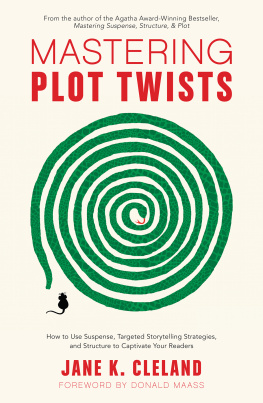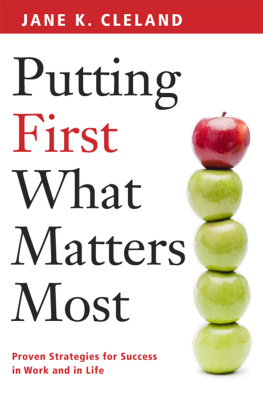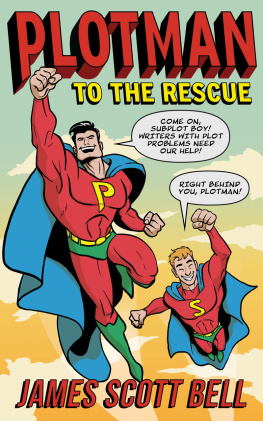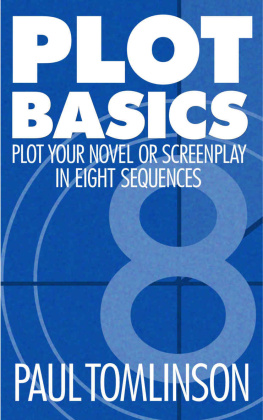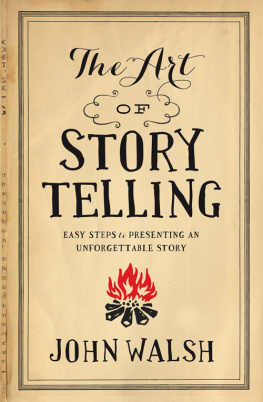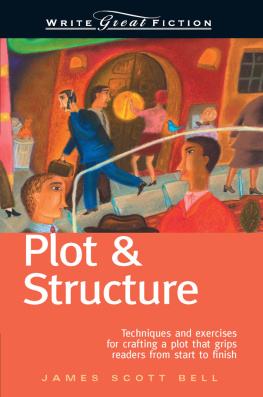Contents
Guide
MASTERING
PLOT TWISTS
How to Use Suspense, Targeted Storytelling Strategies, and Structure to Captivate Your Readers.
JANE K. CLELAND

WritersDigest. com
Cincinnati, Ohio
TABLE OF CONTENTS
PART ONE
PRE-PLOTTING
PART TWO
PLOTTING
DEDICATION
This is for librarians, the rock stars of my world.
And of course, for Joe.
FOREWORD
The human race is divided into many opposing camps. Morning people or night owls. Cat people or dog lovers. Coffee or tea. Dive into the deep end, or tiptoe in at the shallow end. (Lets not get into party politics or bourbon versus scotch. Well only get into an argument, or even exchange blows.)
Then theres the matter of surprises. Some like them, others dont. Some surprises are pleasant, like holiday presents wrapped in shiny paper. Others are scary, like a phone call at 2 A.M. or when the oncologist says, The test results are back. Your options are limited but we need to discuss them.
There is one situation, though, in which everyone loves to be caught off guard. Im talking about when a story takes an unexpected turn. If its a turn for the worse then suspense rises and so does excitement. When its a turn for the betterlike when the cavalry comes riding in, saywe cheer.
Twists and turns in stories are never bad. No one wants stories to be predictable. Indeed, the imperative for writers is to fool us. In stories, we want to be led this way and that, the writer always ahead and in control. We want aces up the writers sleeve. We want the writer to pull rabbits from a top hat or a pistol from a clutch purse. Mystery fiction, in fact, is built on misdirection. Red herrings are the misdirection; the reveal of the true killer is (we hope) the surprise.
Now, genre fiction would seem by its very nature to be predictable. Its supposed to be, in a way, isnt it? The killer will be caught. The couple who despise each other will in the end walk down the aisle. A lone hero will save the world or vanquish the dragon. The point of such stories is to affirm our beliefs and assure us that things will always come out okay. Genre fiction reassures.
Right?
The task in writing genre fiction, then, is in a way is to convince the readerif possiblethat things cannot possibly come out right. Create obstacles. Drop complications. Set your protagonist back. Destroy his or her ability to accomplish the goal, whatever it might be. Demolish his or her will to carry on. In fact, the point of the so-called dark moment is to cause the protagonistand the readerto feel hopeless. Defeated. When things then turn around and somehow the protagonist pulls the rabbit from the hat and succeeds, it feels like a surprise.
It should, but doesnt always. In practice, endings may feel satisfying but they rarely astonish. When HEA (happily ever after) is the rule, its tough to convince readers that a story could actually come out any other way. The fun lies only in guessing how the author will work the trick. Being in suspense, however, is not exactly the same thing as being surprised. A true surprise cannot be foreseen. Its an act of God. Its an existential variable, not random but not planned (seemingly) either.
How are story surprises created? Many writers regard them as magic, or unexpected gifts from the story god, lightning flashes of inspiration. Twists and turns lurch onto the page like an oncoming car suddenly swerving onto your side of the road. Whoa! Didnt see that coming! Thats nice when it happensinspiration, I meanbut of course plot twists and turns can be planned.
You, the author, know things about your characters that your readers dont. You can conceal them, then reveal them. You can plant dots in a story, then connect them. Characters can have two roles. Fortunes can reverse. Secrets can be revealed. Stakes can dramatically escalate. Electric shocks can be plugged in.
Surprise!
Well, such things are surprises to readers but no surprise to you. In the simplest sense, engineering twists and turns begins as a task no more complicated than setting your intention to spring them on your readers. Which brings us to the book youre about to read. Jane K. Clelands Mastering Plot Twists is a handbook of the tricks underlying the magic. Its your guide to inspiration every day: making lightning flashes not an accident but routinefor you. Twists are tools. Learning how to use them begins with reading the users guide which, luckily, you now have in hand.
Cleland wisely devotes a good deal of time to sound plot construction. Thats important. Twists and turns are unusual happenings. To make them convincing, readers must already be sold on your storys viability. They must accept its reality and be carried along by the storys flow. Without being aware of it, readers must trust that the author is in full control of the tale theyre reading. When that trust is earned, readers relax. The unlikely twists and turns that hit them are thereafter not jarring punctures in the fabric of imagination but welcome and delightful treats. To put over magic tricks you must first be expert at shuffling cards and delivering smooth patter.
Theres more to keeping readers surprised, of course. Twists and turns are not only gigantic plot earthquakes, but intra-scene surprises and momentary line-by-line reveals. Big twists are great, but small surprises can be sprung constantly: in scenes, in dialogue and in exposition. When characters surprise themselves with what they say, do, think and feel then were surprised too.
Cleland knows this. Her discussion of perception gaps is an important step in understanding the interplay of readers expectations and characters actual, unpredictable behavior. Indeed, perception gaps can be a bedrock foundation for story construction, and Cleland shows you how.
Building anticipation, dropping reveals, metaphoric levels, underlying questions, backstory kinetics, playing off context, deploying emotional truths Clelands book deftly, clearly, schematically and with a trove of examples expands our thinking about the nature of surprise. Twists and turns are plot happenings, true, but more fundamentally they happen in readers minds. As Cleland explains, when you understand that you can keep readers in a constant state of wonder.
If nothing else, Clelands TRDs (Twists, Reversals, Danger) will keep your story always humming. When she explains that pace is, in a way, the timing of surprises well, how simple! How true! Why we didnt we see that sooner? Now we know how to handle dynamite. Check out Clelands TRD charted breakdown of Owen Laukkanens The Professionals. What seemed magically inventive is revealed in Laukkanens thriller as a carpenters tools deliberately sawing our expectations in half.
Theres much more in the book ahead, but Ill leave you to be surprised. Trust me, the surprises in store are good ones. When youve studied, practiced, and used Clelands methods youll become a believer, or rather a magicianwhich is to say a master of twists who is able to amaze us as easily as a conjurer making an ace rise up and float into the air out of an ordinary deck of cards.
Magic? No. Its you. Or will be. Read on.
Donald Maass
New York City, February 2018
INTRODUCTION
Its none of their business that you have to learn to write. Let them think you were born that way.

